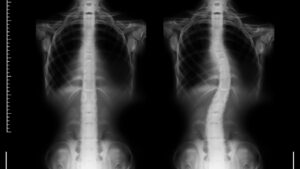While pains and aches are part and parcel of ageing, we do not have to live with the discomfort. In fact, we should not buy into certain misconceptions about pain. In this article, we will dive into various stretches, exploring their importance in helping to boost flexibility, alleviating discomfort, and supporting your overall musculoskeletal health.
Whether you require upper back, neck, or knee pain treatment, incorporating simple stretches into your daily routine will make a significant difference.
Why is chiropractic stretching crucial?
Stretching is more than just an activity that you conduct before and after you exercise. It can be incorporated into your daily lifestyle, helping you maintain a functional and healthy musculoskeletal system. In fact, stretching regularly is highly recommended due to its numerous benefits, such as:
1. Improved flexibility
Stretching helps boost your motion range by elongating and lengthening your tendons and muscles. Stretching after you wake up from a night’s sleep will allow your body to move more freely, allowing you to perform daily tasks easily.
2. Enhanced muscle performance
Stretching before any physical activity helps to prepare your muscles by increasing oxygen delivery and blood flow. This, in turn, enhances your muscle performance, reducing the risk of developing injuries.
3. Reduced muscle tension
Extended periods of poor postures and inactivity cause your muscles to tighten and tense up. Hence, it is recommended that you factor in at least 10 minutes of movement for every 20 minutes you spend sitting in front of your desk – eight minutes for standing and two minutes for moving around and stretching your body. Doing so will help to relieve some of the muscle tension, which will help your body relax better and reduce the possibility of muscle imbalances.
4. Improved posture
Stretching can help to correct any postural imbalance by targeting specific muscle groups by lengthening and releasing any tight muscle and tension.
5. Pain relief
Pains and aches can be caused by poor posture, tightness, and muscle imbalances. Stretching can help relieve these issues through the promotion of pain relief, stress reduction in the joints, and muscle relaxation.
Is chiropractic stretching safe to conduct at home?
It is typically safe to conduct on your own at home, provided you adhere to the proper guidelines and techniques. Always be alert listening to your body to prevent unnecessary injuries. Here are some tips to help you stretch safely at home.
Tip #1: Warm-up
Like any physical activity, you need to warm up your body before stretching. You can do so by engaging in light activities, such as doing gentle movements or walking to help boost blood flow to your muscles, preparing them for the stretches.
Tip #2: Gradual stretches
Do not go straight into intense stretches without allowing your body to get used to them, as it can lead to sprains or strains. Start by stretching gently, gradually increasing the duration and intensity over time.
Tip #3: Prioritise form
Pay attention to your technique, ensuring that you are stretching correctly. Incorrect stretching form can boost the risk of developing injuries, diminishing the effectiveness of your stretches.
Tip #4: Avoid any jerking or bouncing movement
Always maintain a steady and smooth motion when you stretch. Avoid any jerking or bouncing movements, as they can lead to muscle strains and injuries.
Tip #5: Listen to your body
Everybody has varying limitations and flexibility. Hence, there are no one-size-fits-all stretching solutions. Listen to your body’s signal, avoiding pushing through any pain or overstretching. You should be stretching to a comfortable tension, not pain.
Examples of simple stretches that you can conduct at home
The simple stretches mentioned below will target different areas of your spine, helping you to alleviate most discomfort and pain. Do remember to follow the five tips mentioned above to stretch safely.
1. Simple stretches for lower back pain
Knee-to-chest stretch: Start by lying on your back, bending your knees while keeping your feet flat on the ground. Then, bring one knee towards your chest gently with both hands until you feel a slight pull on your lower back. Hold that position for up to 30 seconds, switching to the other knee after.
2. Simple stretches for upper back pain
Thoracic rotation stretch: Sit on the edge of your chair with your feet flat on the ground. Then, place one hand at the back of your head with the adjacent elbow pointing sideways. Gradually rotate your body in the opposite direction. So, if your right hand is at the back of your head, you rotate to the left. You might want to use the other hand to provide additional but gentle resistance until you feel a slight pull on your upper back. Hold that position for up to 30 seconds, switching to the other hand after.
3. Simple stretches for neck pain
Neck side bends: Stand or sit with your back straight. Then, gently tilt your head towards one side of the shoulder. You can use the adjacent hand to gently pull your head, holding that position for up to 30 seconds, switching to another side after.
Conclusion
Stretching is an incredible tool to promote flexibility, relieve pain, and support overall musculoskeletal well-being. Incorporating them into your daily routine certainly will improve the quality of your life. However, it is vital that you conduct them safely, listening to your body and knowing when to stop.
Here at Healing Hands Chiropractic, we do more than just offer solutions, such as frozen shoulder treatments or lower back pain treatments; we educate you on how to maintain your musculoskeletal health, ensuring that your chiropractic treatments remain effective through changes in your daily routine. Book a consultation with us today to experience a pain-free life.




